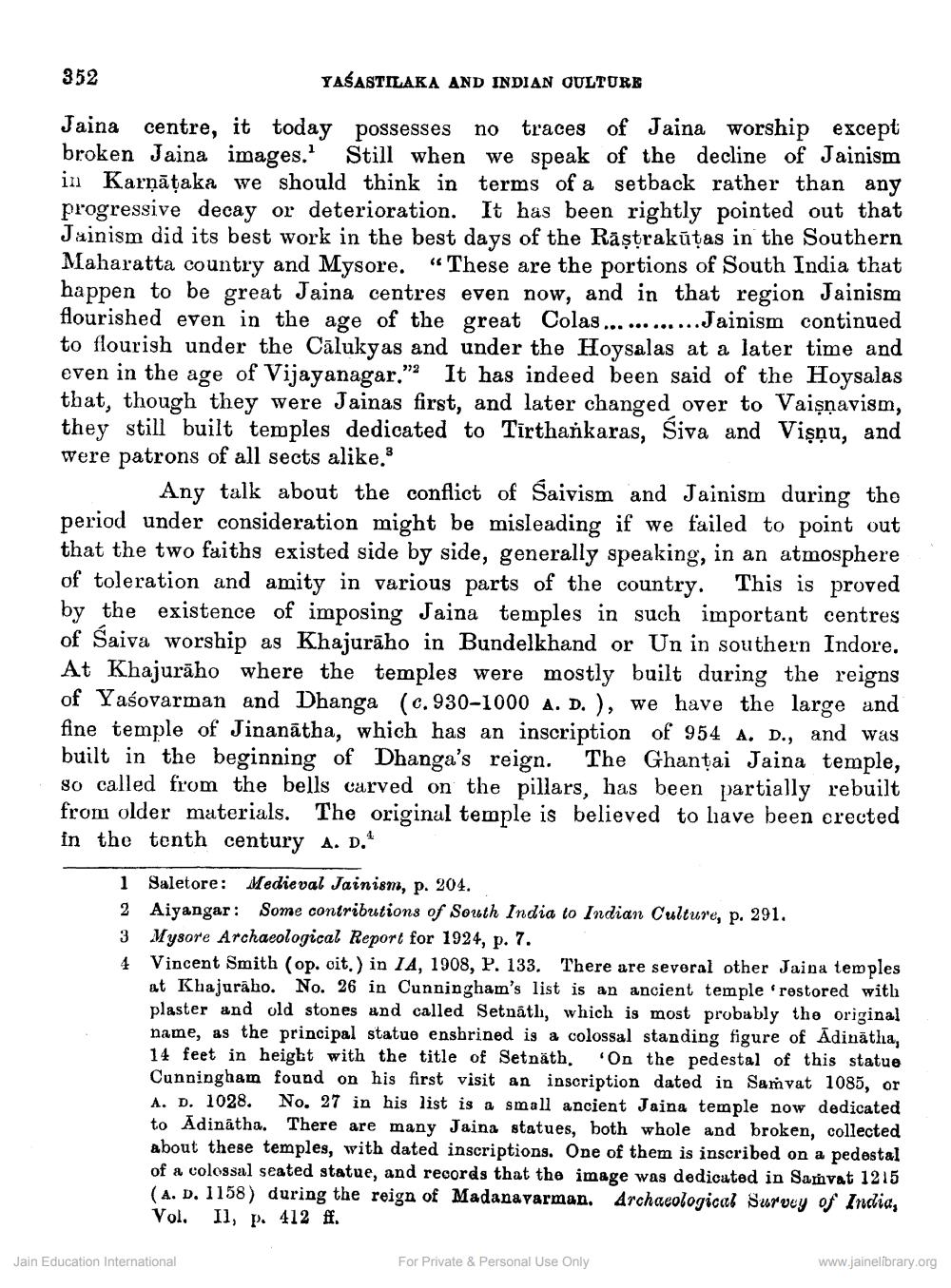________________
352
YASASTILAKA AND INDIAN CULTURE
Jaina centre, it today possesses no traces of Jaina worship except broken Jaina images.1 Still when we speak of the decline of Jainism in Karnataka we should think in terms of a setback rather than any progressive decay or deterioration. It has been rightly pointed out that Jainism did its best work in the best days of the Raṣṭrakūtas in the Southern Maharatta country and Mysore. "These are the portions of South India that happen to be great Jaina centres even now, and in that region Jainism flourished even in the age of the great Colas............Jainism continued to flourish under the Calukyas and under the Hoysalas at a later time and even in the age of Vijayanagar." It has indeed been said of the Hoysalas that, though they were Jainas first, and later changed over to Vaisnavism, they still built temples dedicated to Tirthankaras, Siva and Visņu, and were patrons of all sects alike."
Any talk about the conflict of Saivism and Jainism during the period under consideration might be misleading if we failed to point out that the two faiths existed side by side, generally speaking, in an atmosphere of toleration and amity in various parts of the country. This is proved by the existence of imposing Jaina temples in such important centres of Saiva worship as Khajuraho in Bundelkhand or Un in southern Indore. At Khajuraho where the temples were mostly built during the reigns of Yasovarman and Dhanga (c. 930-1000 A. D. ), we have the large and fine temple of Jinanatha, which has an inscription of 954 A. D., and was built in the beginning of Dhanga's reign. The Ghantai Jaina temple, so called from the bells carved on the pillars, has been partially rebuilt from older materials. The original temple is believed to have been erected in the tenth century A. D.
1 Saletore: Medieval Jainism, p. 204.
2 Aiyangar: Some contributions of South India to Indian Culture, p. 291.
3 Mysore Archaeological Report for 1924, p. 7.
4
Vincent Smith (op. cit.) in IA, 1908, P. 133. There are several other Jaina temples at Khajuraho. No. 26 in Cunningham's list is an ancient temple 'restored with plaster and old stones and called Setnath, which is most probably the original name, as the principal statue enshrined is a colossal standing figure of Adinatha, 14 feet in height with the title of Setnäth, 'On the pedestal of this statue Cunningham found on his first visit an inscription dated in Samvat 1085, or A. D. 1028. No. 27 in his list is a small ancient Jaina temple now dedicated to Adinatha. There are many Jaina statues, both whole and broken, collected about these temples, with dated inscriptions. One of them is inscribed on a pedestal of a colossal seated statue, and records that the image was dedicated in Samvat 1215 (A. D. 1158) during the reign of Madanavarman. Archaeological Survey of India, Vol. Il, p. 412 ff.
Jain Education International
For Private & Personal Use Only
www.jainelibrary.org




